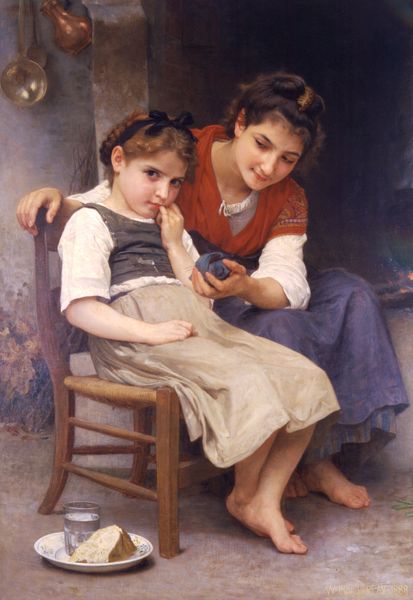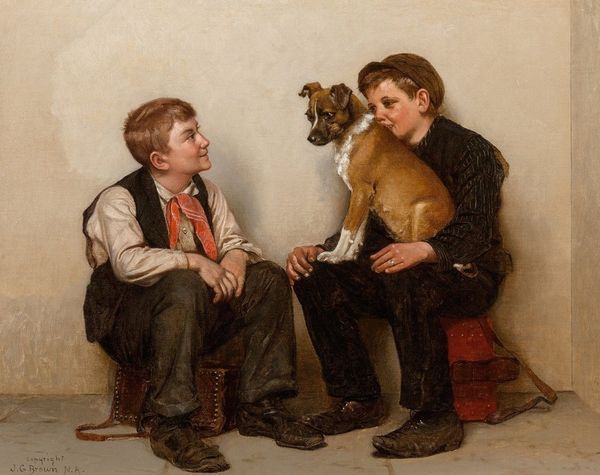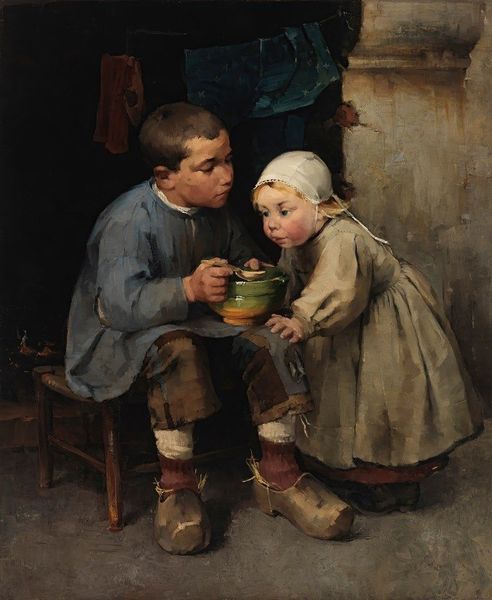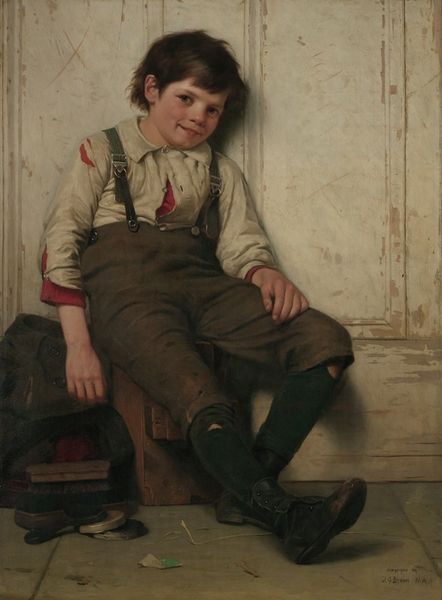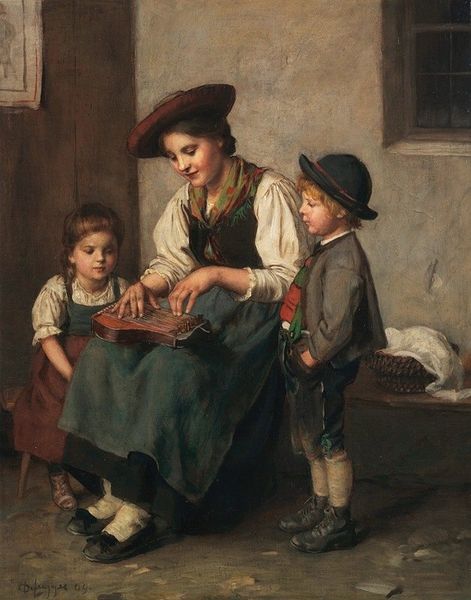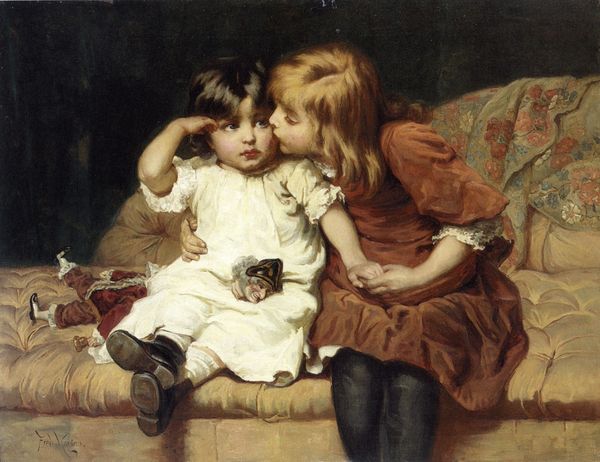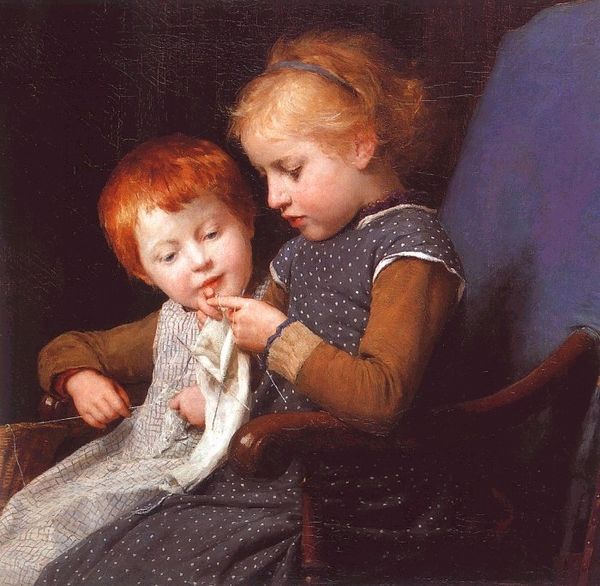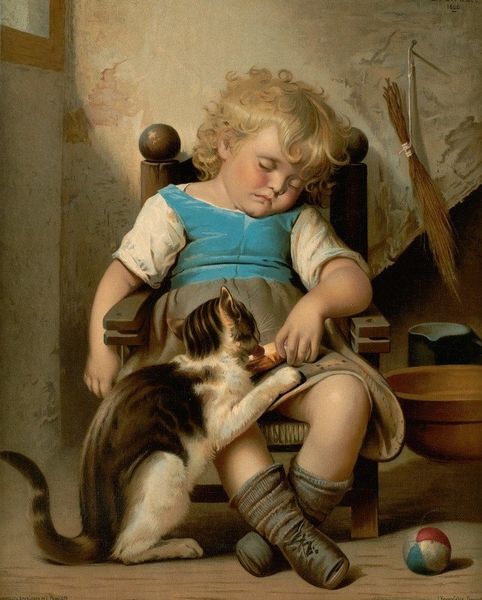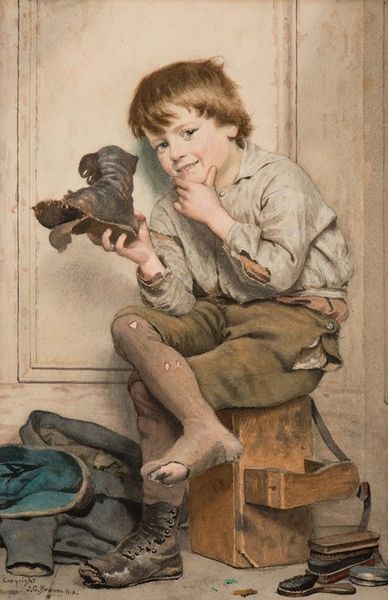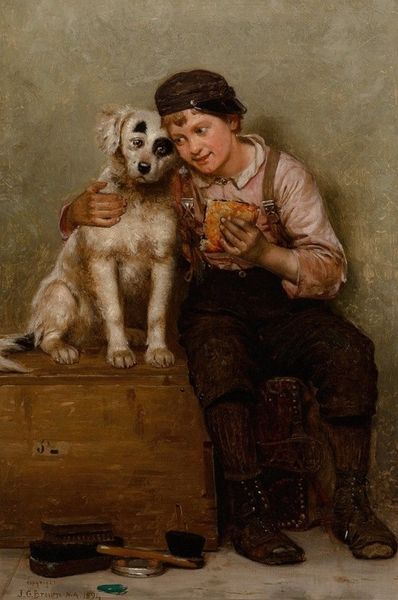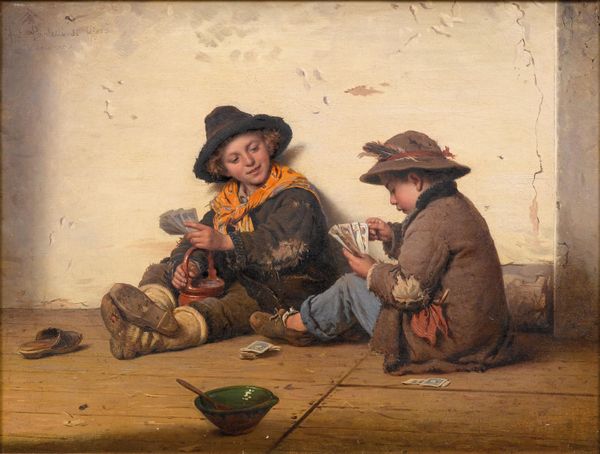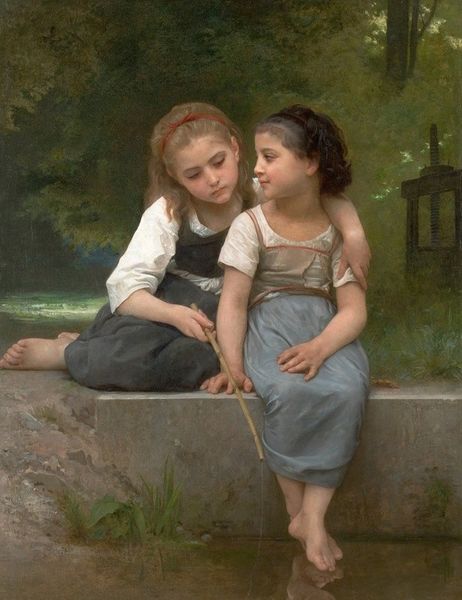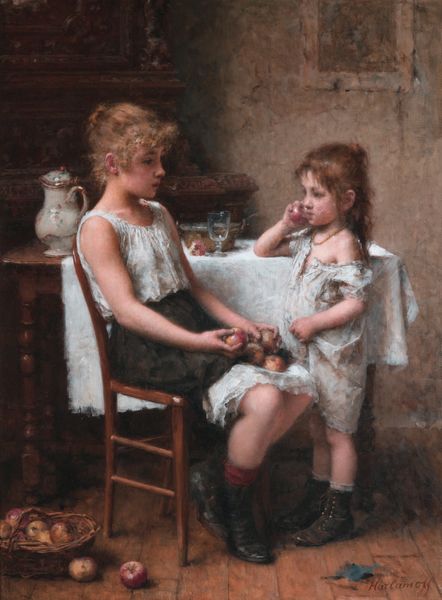
painting, oil-paint
#
portrait
#
figurative
#
painting
#
oil-paint
#
figuration
#
genre-painting
Copyright: Public Domain: Artvee
Editor: So here we have "A Surprise Party," painted in 1888 by John George Brown. It’s an oil painting featuring two young boys, one holding a Jack-in-the-box, the other cradling a small dog. The overall impression is rather sentimental, like a perfectly captured, idealized moment. What strikes you when you look at this piece? Curator: What strikes me is the… theatricality of it all. It feels almost too perfect, too staged. Think about it – those freshly shined boots, the way the light catches the boy’s excited grin as the Jack pops. Brown was a master of genre painting, capturing everyday life, but there's an undeniable artifice at play. Do you sense that too, the posed quality? Editor: I do. The setting seems almost like a backdrop. Perhaps that contributes to the sentimentality? It feels separate from reality, even. What could this mean for how Brown thought of poverty, perhaps? Curator: Precisely! While Brown often depicted the lives of poor children in New York, like these boys, he presented a romanticized version. Clean clothes, rosy cheeks…He catered to the tastes of wealthy patrons who were drawn to stories of humble perseverance, but from a safe distance. There's a real tension there, don’t you think? Is he celebrating or patronizing these boys? Maybe both, in a way. Editor: So it's not simply a record, but a narrative carefully crafted for a particular audience. I hadn’t thought of that duality before, and now I'm starting to see the complexities behind the image. Curator: Exactly. It encourages us to ask the hard questions when engaging with images like these!
Comments
No comments
Be the first to comment and join the conversation on the ultimate creative platform.

